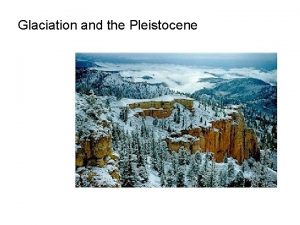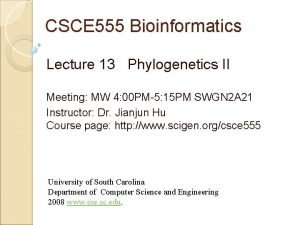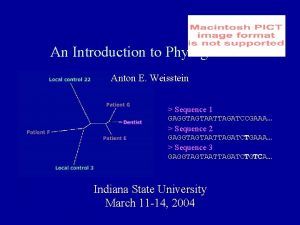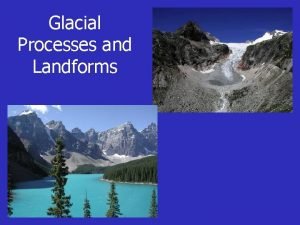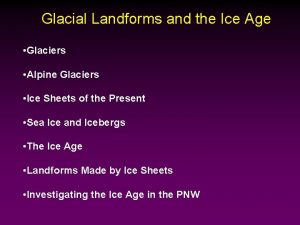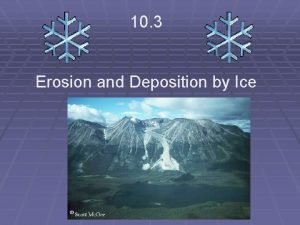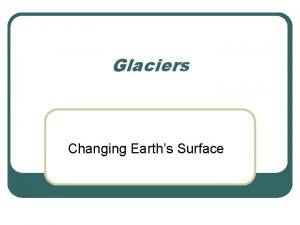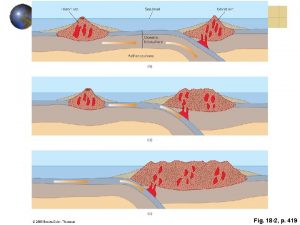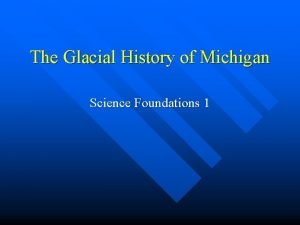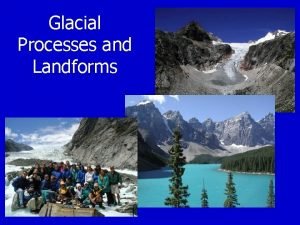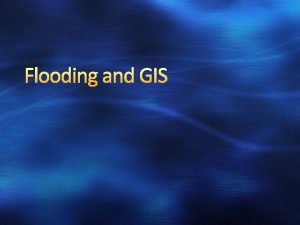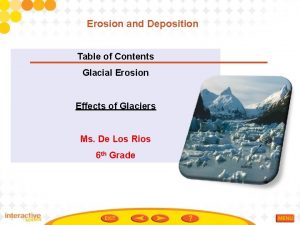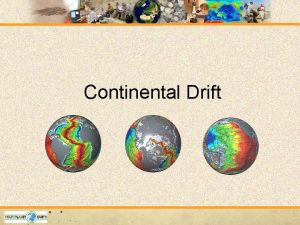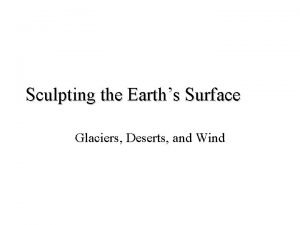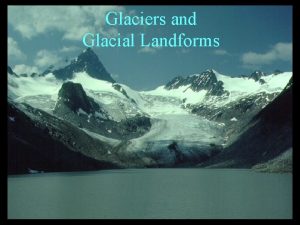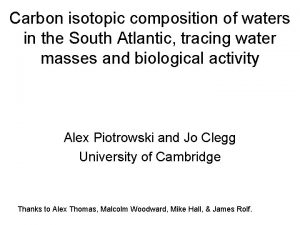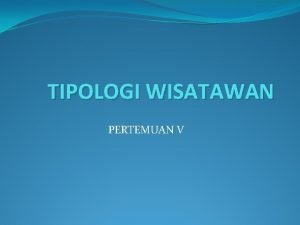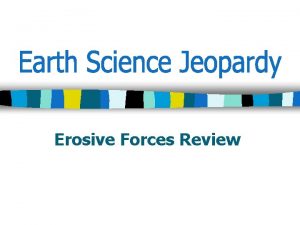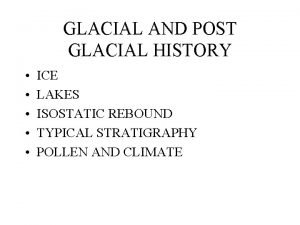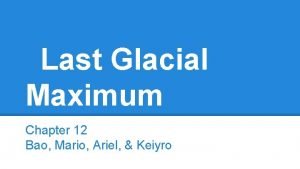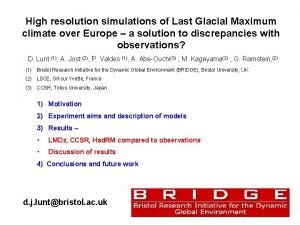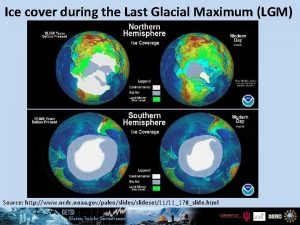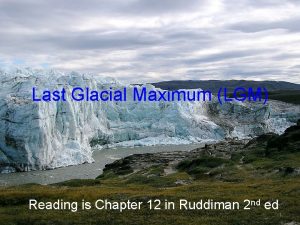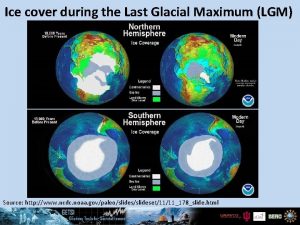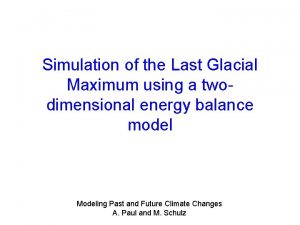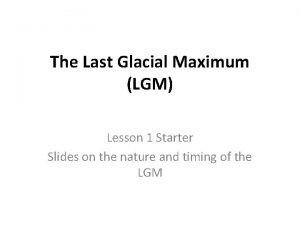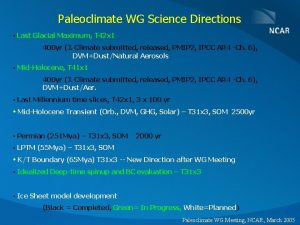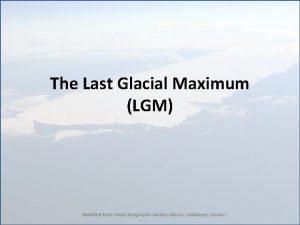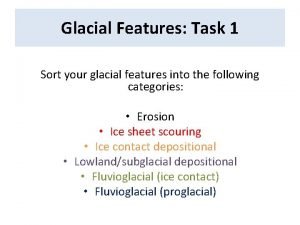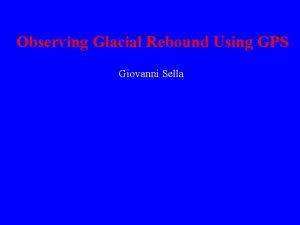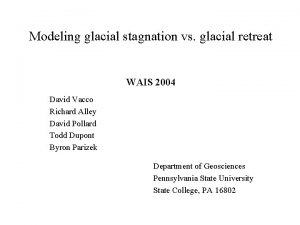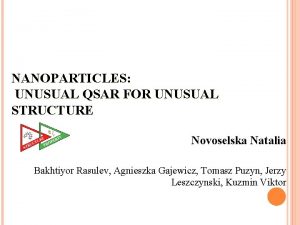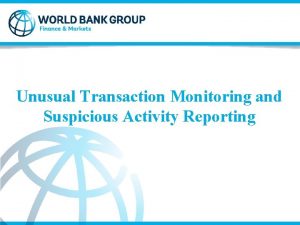SURVEY OF POST LAST GLACIAL MAXIMUM ENVIRONMENT UNUSUAL



























- Slides: 27

SURVEY OF POST LAST GLACIAL MAXIMUM ENVIRONMENT: UNUSUAL SOIL CONSTITUENTS IN ROCKYHOCK BAY STRATIGRAPHY Kiara Jones (SAC) Ryan Lawrence (ECSU) Mentor: Dr. Malcolm Le. Compte (ECSU)

Abstract � Throughout North America’s eastern coastal plain are found a variety of features attributed to ice age climate. These include many elliptical, shallow depressions collectively called Carolina Bays, hypothesized to have been formed by the strong, sustained winds and arid, cold climate characteristic of glacial epochs (Raisz, 1934, Johnson, 1942 and Kaczorowski, 1977). This view eclipsed the 1933 proposition by Melton and Schriever, and expanded by Prouty (1934, 1953), that extraterrestrial debris produced by an aerial meteorite or comet explosion in the vicinity of the Great Lakes during the late Pleistocene formed the bays. Recent discovery that a number of the bays were found to contain material associated with extraterrestrial impacts including carbon and magnetic spherules, glass-like carbon, charcoal and nanodiamonds reinvigorated the debate over the bay’s origins (Firestone, et. al. 2007). 2

Abstract � To confirm the bays were receptacles for impact material, soil samples were previously taken from Rockyhock Bay in Edenton, NC. Sequential soil samples were excavated near the bay’s center and core samples extracted near the bay’s rim. The samples were examined to determine the presence of carbon-associated markers and to measure the density of magnetic grains and grain-size distribution. Magnetic spherules were found among the smaller size portions of the magnetic grains and spherule density estimated. The geochemistry of a magnetic spherule was determined using scanning electron microscopic energy dispersive x-ray spectroscopy (SEM-EDS). 3

Keywords � Last Glacial Maximum (LGM) � Pleistocene-end � Carolina Bays � Slurry � Stratigraphy � Microtektite � Scanning Electron Microscope 4

Evidential Markers: Soil Constituents Charcoal Glass-like Carbon Magnetic Grains Carbon Spherule Nanodiamonds Magnetic Spherule 5

Statement of Problem � Do the same soil constituents exist in Rockyhock Bay sediment? �If so, can their source and significance be determined? 6

Rockyhock Bay: Soil Sample Source * Barnes & Hall URE OMPS 2009 7

Analysis Materials Digital 1 gram Scale 8

Soil Processing �A 300 gram aliquot was extracted from each sample. �Samples were mixed for homogeneity prior to extraction. 9

Extraction of Floating Material 10

Extraction and Rinsing of Magnetic Grains 11

Weighing Magnetic Grains Hitachi S-3200 N SEM 12

Size Sorting of Magnetic Grains Keck Sand-Shaker Sieve 13

Analysis of Magnetic Grains 14

Scanning Electron Microscope (SEM) Hitachi S-3200 N SEM 15

SEM Image Magnetic spherule from sample -depth 48” 16

SEM: Energy Dispersive X-Ray Spectroscopy 17

Comparison of the Geo-chemical Composition to Earth’s Crust Geo-chemistry of Magnetic Spherule (48”) Elements Percent (%) Oxygen 29. 9 Silicon 16. 54 Aluminum 14. 83 Iron 3. 05 Magnesium 0. 42 Calcium 1. 02 Potassium 0. 57 Earth’s Crust Composition 18

Microtektite Formation: Terrestrial Impact Theory 19

Results Mass Density of Magnetic Grains 14 Mass Density of Grains 12 10 8 Mass of Magnetic Fraction 6 4 2 0 0 10 20 30 40 50 60 Core Sample Depths (cm) 70 80 20

Results Peak Depths (cm) Mass of Magnetic Grains (g/kg) Mass of Smallest Magnetic Grains (d < 53 μm) (g/kg) Percent of Smallest Magnetic Grains 61 11. 914 0. 057 0. 48% 91. 4 9. 473 0. 127 1. 34% 121. 9 10. 313 0. 297 2. 87% 152. 4 10. 070 0. 197 1. 96% 21

Results Ratio of Small Mag-Grain density to Total Mag-Grain Density (%) 3. 5 Percentage of Small Magnetic Grain 3. 0 2. 5 2. 0 d < 53 µm 1. 5 1. 0 0. 5 0. 0 20. 0 40. 0 60. 0 80. 0 100. 0 Core Sample Depths (cm) 120. 0 140. 0 160. 0 180. 0 22

RHB Results Compared to other Bays Markers RHB Other Bays Amber Spherules small amounts varying amounts Carbon Spherules none varying amounts Charcoal small amounts varying amounts Glass-like Carbon small amounts varying amounts Nano-diamonds untested varying amounts Magnetic Grains (Peak) multiple peaks single & multi-peaked Magnetic Spherules small amounts varying amounts 23

Conclusion � No significant indication of biomass burning � Multiple bulk magnetic grain peaks � Peak in magnetic grains d < 53 48’ depth � Magnetic spherules - 48” depth sample. � SEM confirmed spherulitic nature �Indicated similar geo-chemistry to other spherules taken from distant sites. 24

Future Work Do same SEM-EDS analysis done for Kimbel Bay magnetic spherules � Take a new core sample from just inside the bay!! � Find and survey other bays with similar Lacustrine-history. � 25

Acknowledgements � Dr. Linda Hayden � Dr. Malcolm Le. Compte � Rob’t Langenburg � Chuck Mooney and North Carolina State University 26

References � � � Barnes, La. Esha & Hall, Cedric, “The Carolina Bays: An Investigation of North America’s Post Last-Glacial Maximum Environment (LGM), ” 2009 Glass, B. P. , “Microtektite Surface Sculpturing, ” in Bulletin of the Geological Society of America, vol. 85 no. 8, 1974 Koeberl, Christian, “The Geochemistry of Tektites: an overview, ” in Annual Review of Earth and Planetary Sciences, vol. 14 no. 1, 1986 R. B. Firestone, A. West, J. P. Kennett, L. Becker, T. E. Bunch, Z. S. Revay, P. H. Schultz, T. Belgya, D. J. Kennett, J. M. Erlandson, O. J. Dickenson, A. C. Goodyear, R. S. Harris, G. A. Howard, J. B. Kloosterman, P. Lechler, P. A. Mayewski, J. Montgomery, R. Poreda, T. Darrah, S. S. Que. Hee, A. R. Smith, A. Stich, W. Topping, J. H. Wittke, and W. S. Wolbach, “Evidence for an extraterrestrial impact 12, 900 years ago that contributed to the megafaunal extinctions and the Younger Dryas cooling, ” in PNAS , vol. 104 no. 41, 2007, pp 2 -4 Whitehead, Donald, “Late-Pleistocene Vegetational Changes in Notheastern North Carolina, ” in Ecological Mongraphs, ” in Ecological Society of America, vol. 51 no. 4, 1981, pp. 451– 471. 27
 Beringia map
Beringia map Absolute max
Absolute max Maximum likelihood vs maximum parsimony
Maximum likelihood vs maximum parsimony Maximum likelihood vs maximum parsimony
Maximum likelihood vs maximum parsimony Glacier process
Glacier process Glacial ice is formed by
Glacial ice is formed by Vertientes del artico
Vertientes del artico What are the two main types of glaciers
What are the two main types of glaciers Picture of alfred wegener
Picture of alfred wegener 5 agents of erosion
5 agents of erosion Glossopeteris
Glossopeteris Michigan glacial history
Michigan glacial history Klasifikasi tanah astm
Klasifikasi tanah astm Glacial processes and landforms
Glacial processes and landforms Glacial river warren
Glacial river warren Glacial till wedding
Glacial till wedding Similar fossils found on different continents
Similar fossils found on different continents Metamorphic rocks in michigan
Metamorphic rocks in michigan Glacial deposits
Glacial deposits Cirque glacier
Cirque glacier Nadw aabw glacial
Nadw aabw glacial 叫叫abcde
叫叫abcde Post enumeration survey
Post enumeration survey Financial environment of business
Financial environment of business Unusual british traditions
Unusual british traditions Pen lifts and separation
Pen lifts and separation Elite tourist adalah
Elite tourist adalah Unusual job interviews
Unusual job interviews
